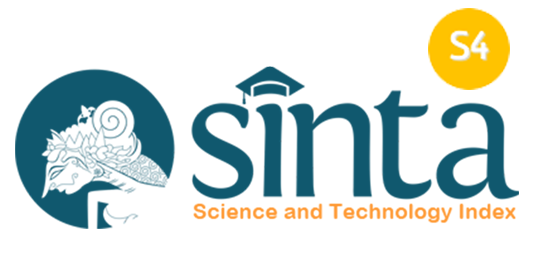STRATEGIES FOR INCREASING AWARENESS OF COVERING THE AUTHORIZATION TO FORM RELIGIOUS CHARACTER EDUCATION AMONG ELEMENTARY SCHOOL STUDENTS
 PDF Download: 77
PDF Download: 77
DOI:
https://doi.org/10.32665/alulya.v7i2.1452Keywords:
Aurat, teaching, islamic eduationAbstract
Abstract
The Islamic faith teaches its followers on how to distinguish themselves from non-Muslims in tradition, worship, and in private. The guidelines for the maintenance of aurat are one of the apparent variations. This research aims to investigate the awareness of genital covering in order to offer sixth-year students with exposure and information regarding the protection of the genitalia, which includes the regulation of clothing that conforms to Islamic law. In this research, observational and temporal methods were employed. The research sample comprised ten sixth-grade students and four teachers chosen by the respondents. Overall, the findings of the survey indicate that some female students cover their aurat entirely, while others do so just when researching Islamic Education. After the Islamic Education period concluded, some pupils removed their hoods. In Physical Education and co-curricular activities, there are more students who do not have their aurat properly covered. Teachers promote "Role models" to students, utilize power of attorney, campaigns and workshops, and distribute presents and Fardiyah Da'wah.
Keywords: Aurat, Teaching, Islamic Education.
Downloads
References
Hamat, Wan Norina Wan, Zaharah Hussin, Ahmad Fkrudin Mohamed Yusoff, and Ahmad Arifin Sapar. 2013. “Pengaruh Media Massa Terhadap Penampilan Akhlak Murid Islam Politeknik Malaysia.” The Online Journal of Islamic Education 1: 17–27.
Llewellyn, G. et al. 2003. “Supporting Families: Family Well-Being and Children with Disabilities. School of Occupation and Leisure Sciences.” University of Sydney: 1–98.
Lyons, A.M., Leon, S.C., Roecker Phelps, C.E., Dunleavy, A.M. 2010. “The Impact of Child Symptom Severity on Stress Among Parents of Children with ASD: The Moderating Role of Coping Styles.” Journal of Child Family Studies 19: 516–24.
Mamat, Mohd Nor. 1999. Muslimah WAnita, Eksploitasi Dan Media Massa: Dedah Aurat Pengaruhi Fikiran Dan Gaya Hidup.
Ofori, D. A. et al. 2020. “No 主観的健康感を中心とした在宅高齢者における 健康関連指標に関する共分散構造分析Title.” Molecules 2(1): 1–12. http://clik.dva.gov.au/rehabilitation-library/1-introduction-rehabilitation%0Ahttp://www.scirp.org/journal/doi.aspx?DOI=10.4236/as.2017.81005%0Ahttp://www.scirp.org/journal/PaperDownload.aspx?DOI=10.4236/as.2012.34066%0Ahttp://dx.doi.org/10.1016/j.pbi.201.
Suhid, Asmawati et al. 2013. “Tahap Pengetahuan Pelajar Tentang Konsep Menutup Aurat: Suatu Tinjauan Umum.” The Online Journal of Islamic Education 1: 40–47.
Yusof, Farahwahidah Modh, and Nur Afzan Muhamad. 2010. “Aurat Wanita Muslim Menurut Perspektif Islam: Penerimaan Dan Pengamalan Di Kalangan Masyarakat.” : 1–7. https://www.researchgate.net/publication/49910746_Aurat_Wanita_Muslim_Menurut_Perspektif_Islam_PenerimaanDan_Pengamalan_Di_Kalangan_Masyarakat.
Downloads
Published
How to Cite
Issue
Section
License
Copyright (c) 2022 Al Ulya : Jurnal Pendidikan Islam

This work is licensed under a Creative Commons Attribution-ShareAlike 4.0 International License.
 PDF Download: 77
PDF Download: 77













